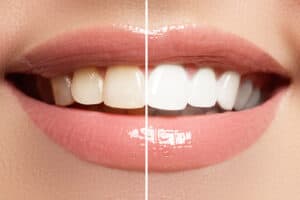The purpose of flossing is to remove and plaque and food particles a normal toothbrush may not be able to reach. Plaque buildup is what leads to tooth decay and gum disease, so it is always important to floss daily. However, the benefits can only be seen when it is done correctly- which more often than not people do not know how to floss right. Oral hygiene is incredibly important, and flossing is a key part of it.
The Floss
Believe it or not, floss can come as a string, on a manual tool like a pick or pre-threaded flosser. It also comes in different flavors and can be waxed, unwaxed, thick or even in “comfort” floss. While the flavors are merely based on preference, the different types of floss pertain to the different types of teeth people have. The various options can be overwhelming but are actually helpful since everyone has a different smile. If you are unsure which option is right for you, consult with your oral hygienist.
The Time
There is always the question of when to floss- before or after you brush your teeth? The truth is it doesn’t really matter as long as you end up flossing. The point of flossing is to get at the stuff your toothbrush can’t so that is all that is important in the end. Whether you brush before or after you floss, always rinse your mouth out at the end of the routine. Flossing can loosen up stuff your toothbrush missed or couldn’t reach so rinsing your mouth can help flush it all out. Rinsing your mouth also may get stuff that flossing may have loosened up.
The Technique
Flossing has to be done in a precise way to create maximum benefits and minimal damage to the gum lines. Start with about eighteen inches of floss, using your middle fingers, wind the floss around your fingers and leave about two inches of floss to work with. Using your thumb and index finger, gently slide the floss between your teeth. Make sure to go slow and follow the curves of your gums to avoid irritation or even bleeding. Don’t force the floss, though; gum tissue is very sensitive and flossing too roughly can cause some serious damage. As you move from tooth to tooth, make sure you use clean sections of floss. Remove the floss from in-between the teeth by sliding downward using the same back and forth motion you started with. Keep in mind that flossing shouldn’t be painful so if it is, consult with your oral hygienist as something else could be causing the problem
Flossing is a key part in maintaining oral health and many people always forget to do it. Make an effort to remember it, even if it is a quick flossing. Also make sure to always brush your tongue too, another part of oral hygiene which is often forgotten. Bacteria in the mouth can remain in your taste buds- which is another reason to rinse out your mouth.
Filed Under: Best Way To Floss






